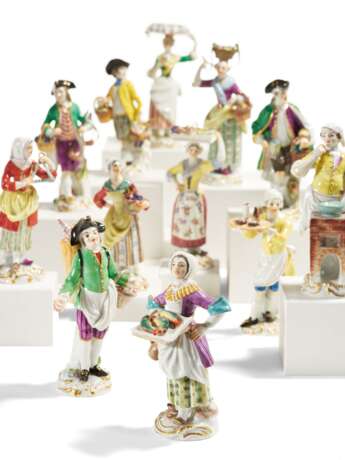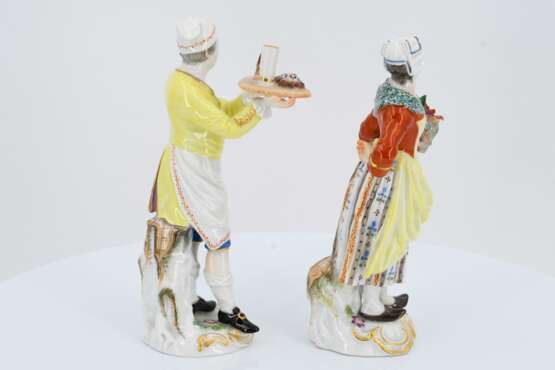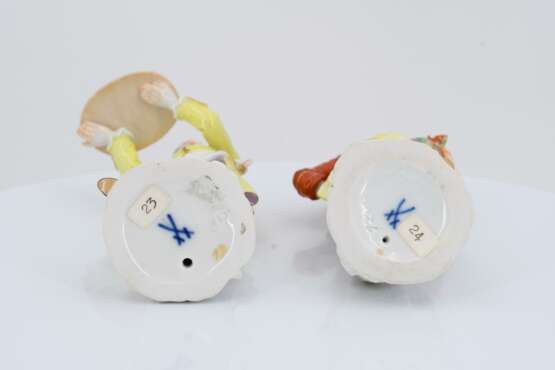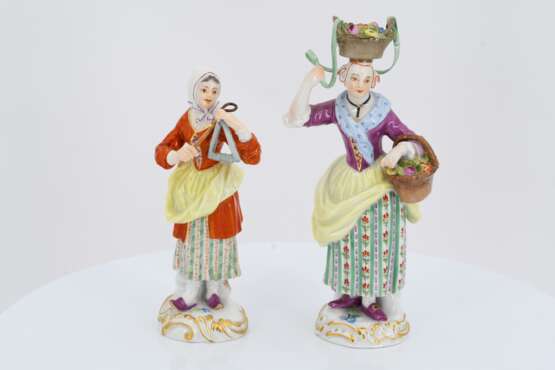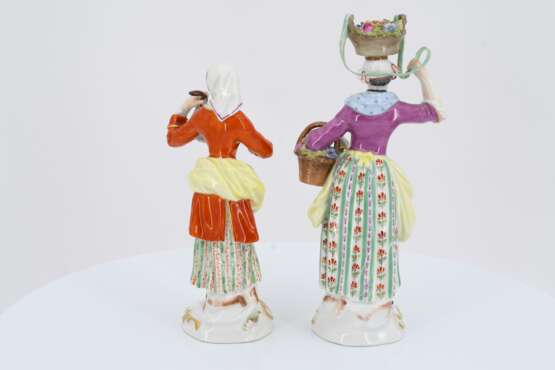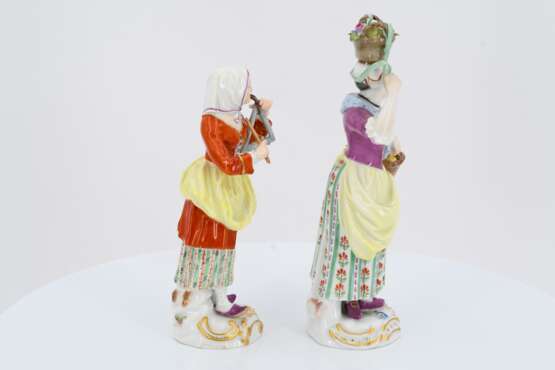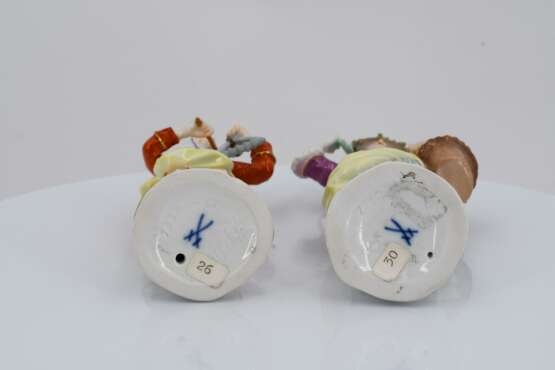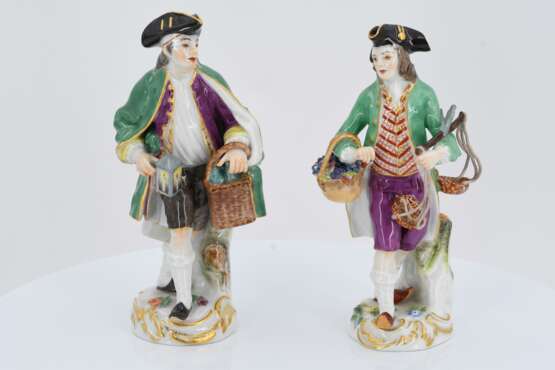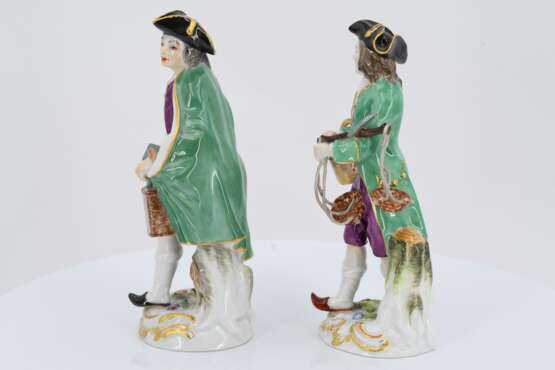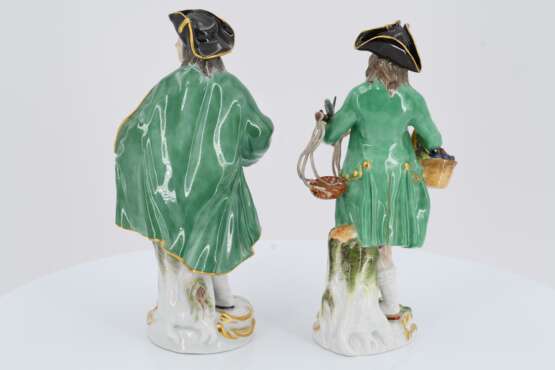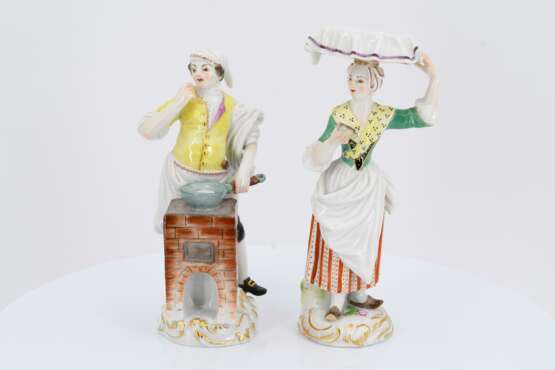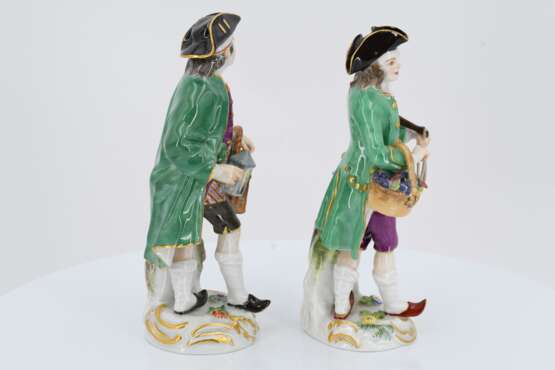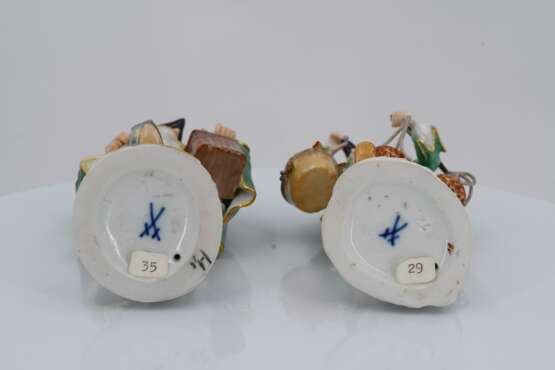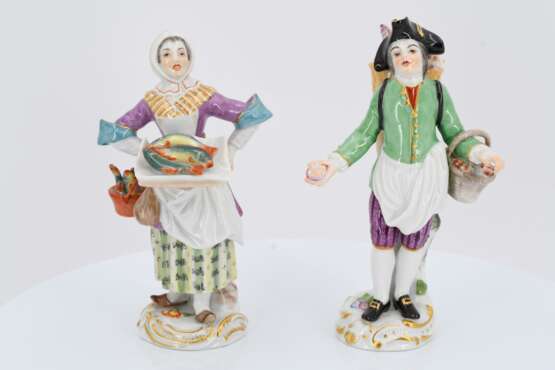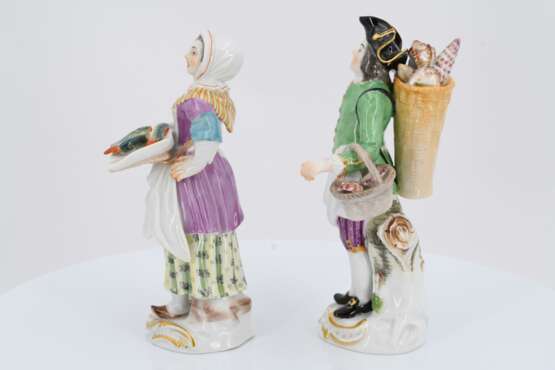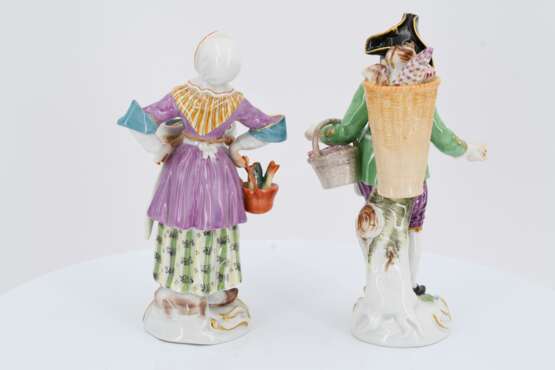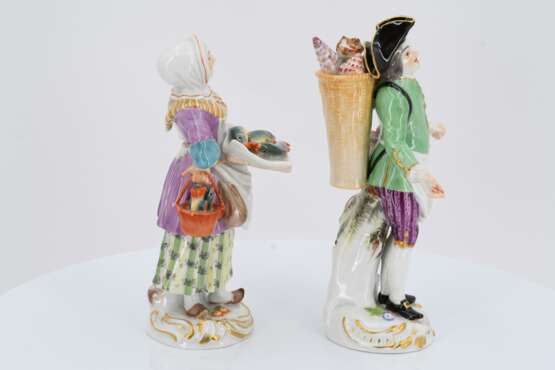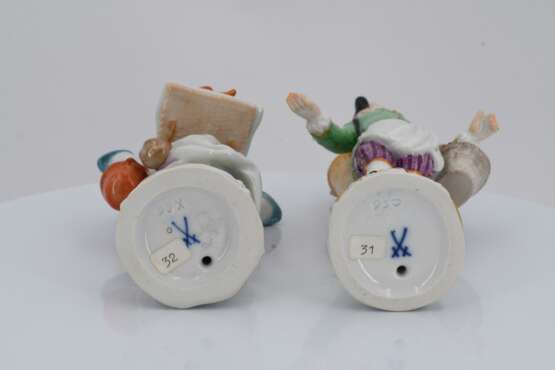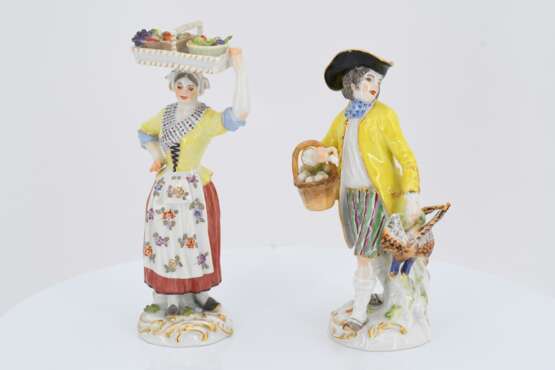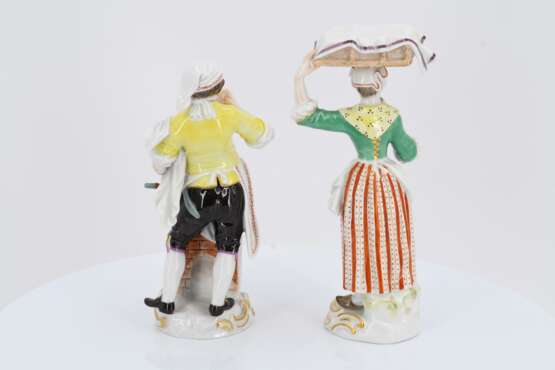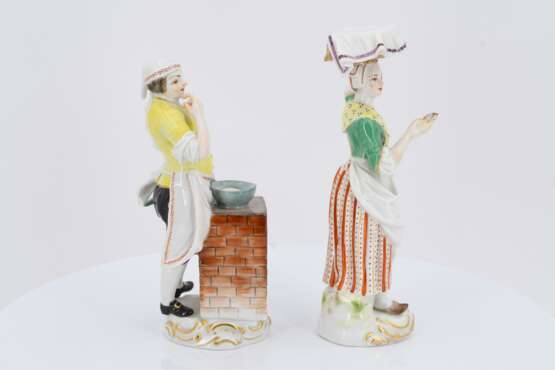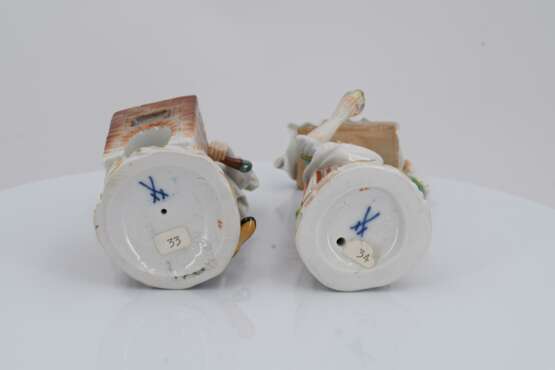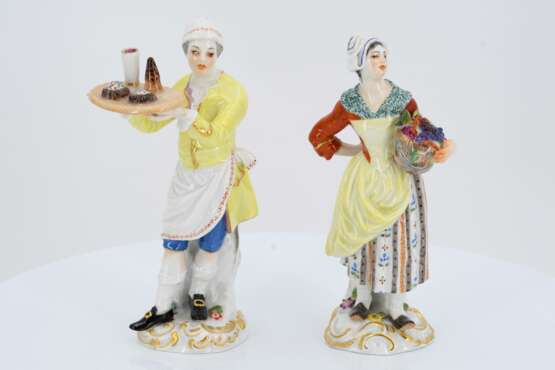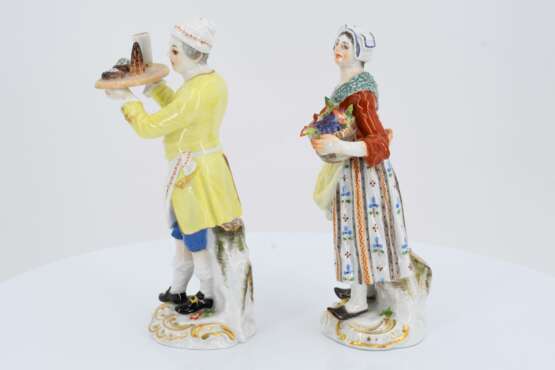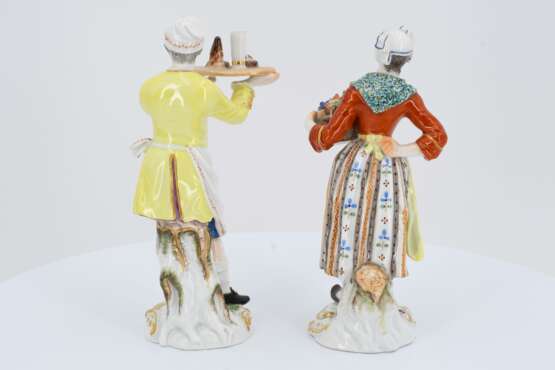ID 647728
Lot 4 | 12 porcelain figurines from a series "Cris de Paris"
Estimate value
€ 4 000 – 6 000
Meissen.
Date: 20th century.
Maker/Designer: Model J.J. Kaendler and P. Reinicke.
Technique: Porcelain, enriched in colours and gold.
Description: Triangle player, woman with 2 baskets of flowers, man with frying pan and fried egg, man
with scallops, man with grapes, man with pies, man with birds and eggs, woman with fish,
man with grapes and weighing pan, man with bottles, man with fruit, woman with scallops.
Measurement: Height 13,5 - 15,5cm.
Mark: Swordsmark, 8/60220/60221/60222/60223/60225/60226/60228/60229/60230/60231/60232, different porcelain former's and painter's no., some with year marks.
In the 18th century, the streets of the great European cities were filled with the shouts, often in rhyme or song, of various merchants and craftsmen offering their goods and services. Their trade was mostly aimed at members of the same low-income social class, so wages were meagre, competition was fierce and life was often hard. Criers were a popular motif in art, whether because of their faces marked by life or a romanticised perception of their way of living.
In Meissen, artists attempted this subject as well. In the early 1750s, Johann Joachim Kaendler travelled to Paris on behalf of August III and met J. Hüet, the most important Parisian dealer for Meissen porcelain. On this occasion he met his brother Christophe, a well-known engraver and decorative painter. Kaendler commissioned him to produce a series of 31 model drawings with Parisian criers in the rococo style typical of the period. These pen and ink drawings are preserved in the Meissen manufactory archives to this day.
With 35 models, the "Cris de Paris" form the largest series of themed figurines in the manufactory's programme. The traders, dressed in the delicate colours of the Rococo period, go about their work on rocaille pedestals decorated with gold. Most of the models are by Peter Reinicke. Nevertheless, some of the figurines reveal signs of Kaendler's signature esthetic. He obviously assisted Reinicke in his work or reworked models later.
However, not all the criers refer to the models supplied by Hüet. Some of the finely crafted figurines are based on depictions by Boucher or Watteau, while others probably sprang from the imagination of their modellers. By turning to everyday representations, such as those presented by the criers, the Meissen manufactory was addressing an increasingly middle-class audience.
Shortly before the outbreak of the Seven Years' War, this reorientation was crucial to the later economic success of the manufactory, whose products became increasingly accessible to a wider public.
All figures are in good age-related condition, except for the crier with grapes and scales. Here the scales are broken in the middle and have been reassembled. a) Crier with baskets of flowers: - Model no. 8th, embosser no. 132 with year mark for 1973. - Good condition. b) Crier with biscuits: 60220, embosser no. 108 with year mark for 1973. - Good condition. c) Crier with grapes: 60221, embosser no. 126 with year mark for 1975, painter no. 20 - Good condition. d) crier with basket and poultry: 60222, embosser no. 112 with year mark for 1973 - Good condition. e) Crier with triangle: 60223, embosser no. 133 with year mark for 1974, painter no. 42 - Good condition. f) Crier with fruit: 60225, embosser no. 128 with year mark for 1973, painter no. 10 - Good condition. g) Crier with grapes and scales: 60226, bossing no. 126 with year mark for 1973, painter no. 18 - Balance staff broken once in the middle and reassembled. h) Crier with shells: 60228, embosser no. 95 with year mark for 1975. - Good condition. i) Crier with fishes: 60229, embosser no. 95 with year mark for 1974 - Good condition. j) crier as cook: 60230, embosser no. 142 with year mark for 1973, painter no. 18 - small burn hole (?) in the frying pan, otherwise good condition. k) crier with scallop: 60231, embosser no. 101 with year mark for 1973, painter no. 18 - Good condition l) Crier with liquor bottles: 60232, embosser no.122 with year mark for 1974. - Good condition.
| Manufactur: | Meissen Porcelain Factory |
|---|---|
| Auction house category: | Porcelain |
| Manufactur: | Meissen Porcelain Factory |
|---|---|
| Auction house category: | Porcelain |
| Address of auction |
VAN HAM Kunstauktionen GmbH Hitzelerstr. 2 50968 Köln Germany | ||||||||||||||
|---|---|---|---|---|---|---|---|---|---|---|---|---|---|---|---|
| Preview |
| ||||||||||||||
| Phone | +49 221 92586215 | ||||||||||||||
| Fax | +49 221 92 58 62 4 | ||||||||||||||
| Buyer Premium | 32% | ||||||||||||||
| Conditions of purchase | Conditions of purchase | ||||||||||||||
| Business hours | Business hours
|
